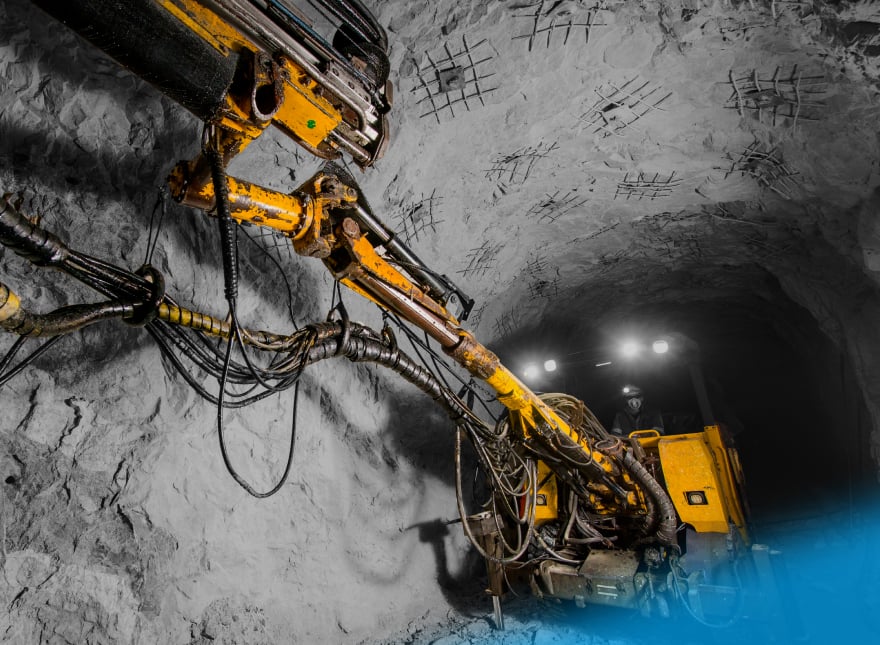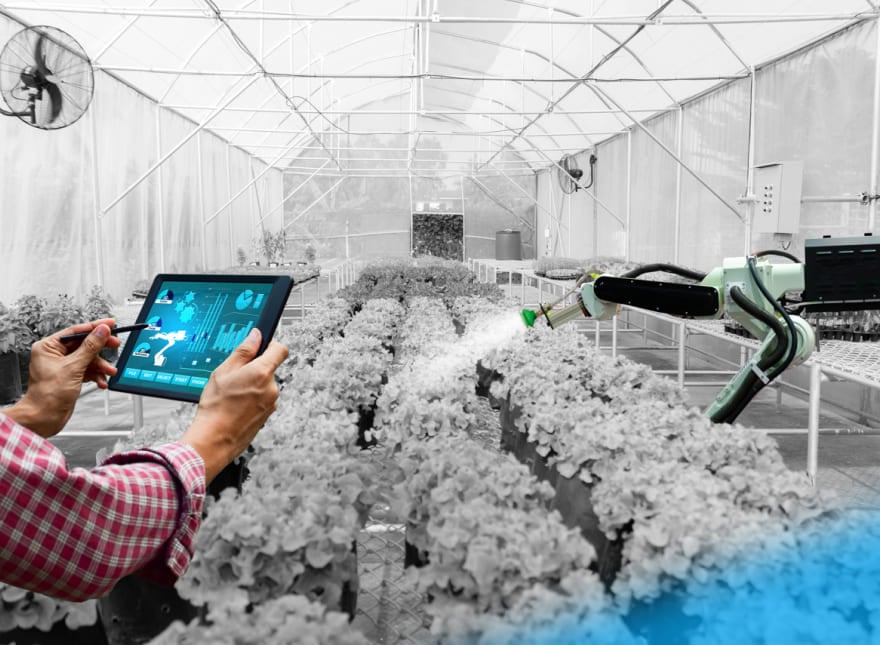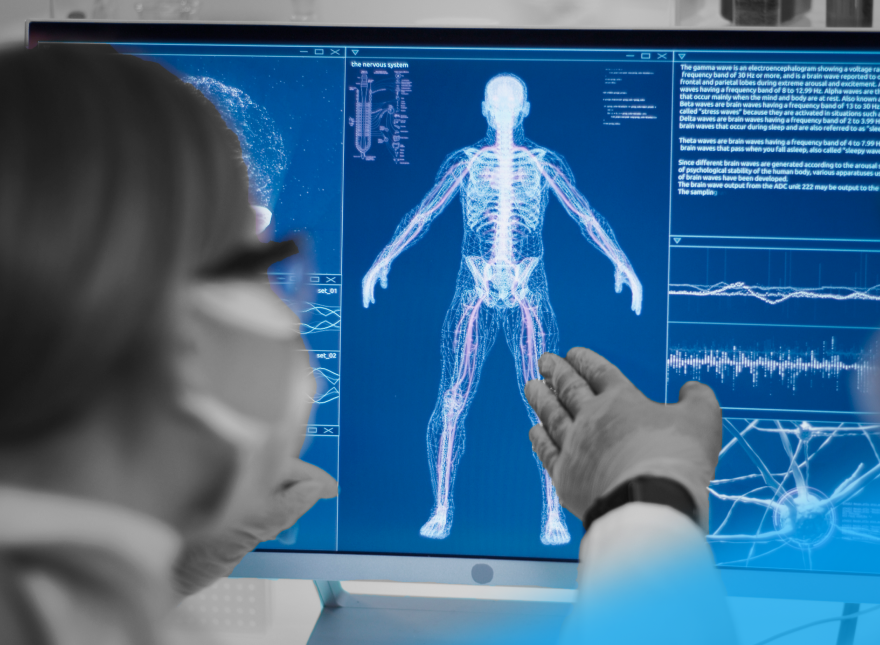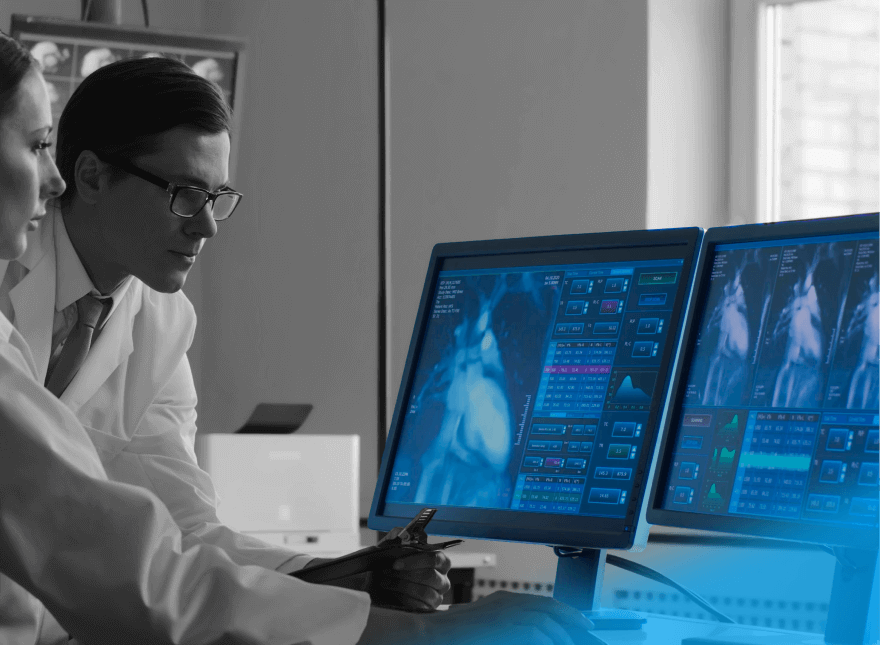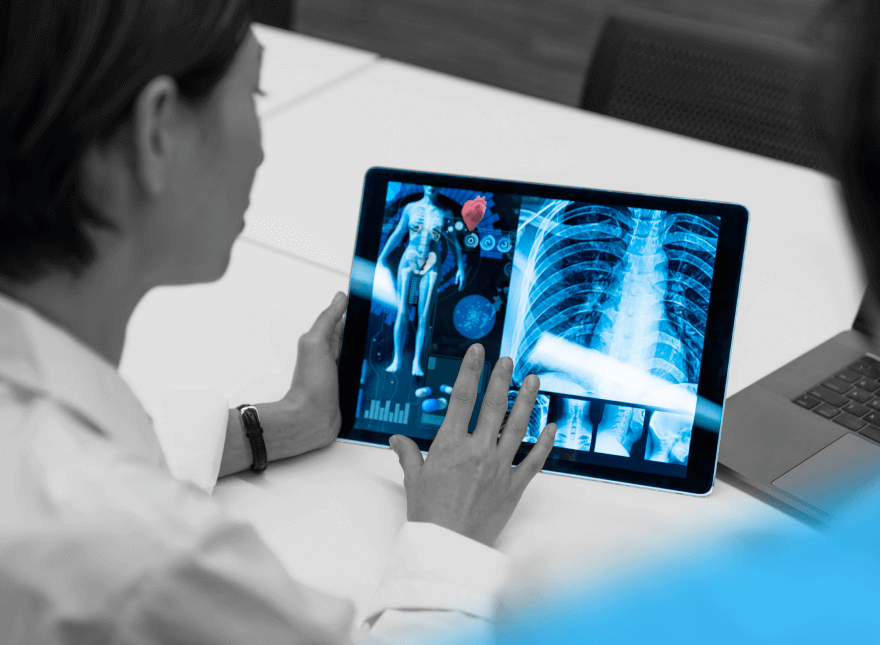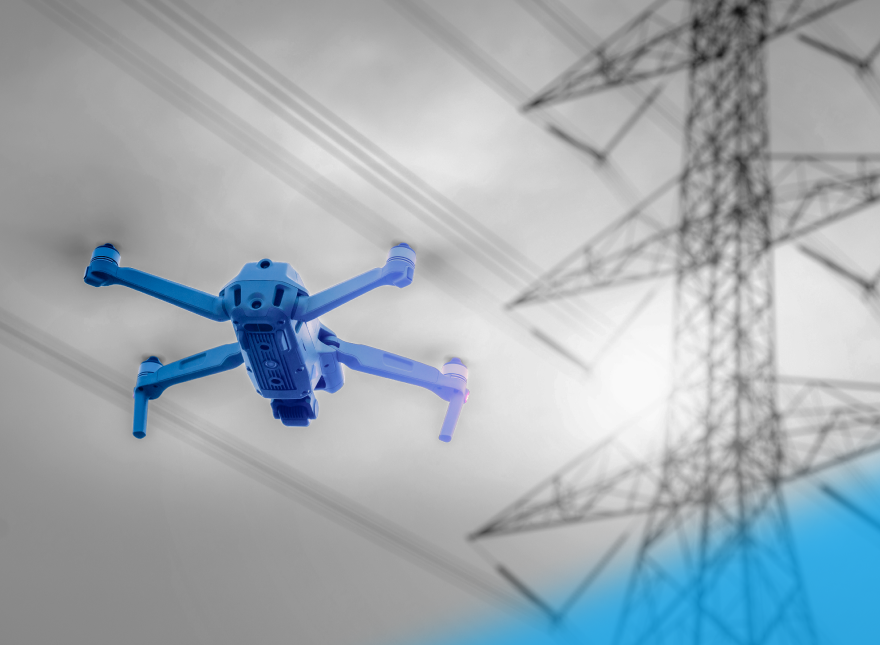Four AR Examples That Boost Manufacturing

Let’s say you want to mass-produce customizable cars. Using AR in manufacturing makes it possible to do so. Your designers will match design options to physical vehicles with spatial AR applications. Technicians will receive instructions in their AR glasses on the fly. And warehouse employees will be more efficient with AR-guided part-location.
This is just one of the profitable and effective AR use cases in manufacturing. Check out more of them below.
Table of Contents
How AR Augments Manufacturing
Simply put, AR integrates data and graphics into the real-world experience. It can be a 3D model placed into a real situation, plus context (like dimensions) added to a display. It’s possible to incorporate AR capabilities into solutions across multiple modalities—visual, auditory, or haptic. But visual forms of AR—via screens or glasses—now prevail across many industries.
In particular, a visual form of AR in manufacturing can simulate, assist, and improve processes before they are carried out. You may need to visualize a new detail or guide personnel with work instructions—and AR is here to help.
In fact, it’s possible to embed 3D models into the digital world with the help of markers, sensors, and projections. Cameras can extract features from visual markers, which could be parts in warehouses. Similarly, GPS and RFID tags are handy when defining the locations of these items. And, as a result, spatial AR applications can overlap workers’ field of view and therefore match virtual options to physical models.
But don’t confuse AR and VR applications in manufacturing. VR takes personnel out of reality—with the help of glasses or headsets—and generates an environment. The use of VR will help create a sketch of a new car model, but it can hardly contribute to parts assembly. AR, in turn, adds computer-generated information to real-world objects and allows them to interact. Speaking of cost, AR services are more affordable than building virtual reality solutions.
What about perspectives? AR has optimistic market value estimates; the industrial manufacturing segment is leading.
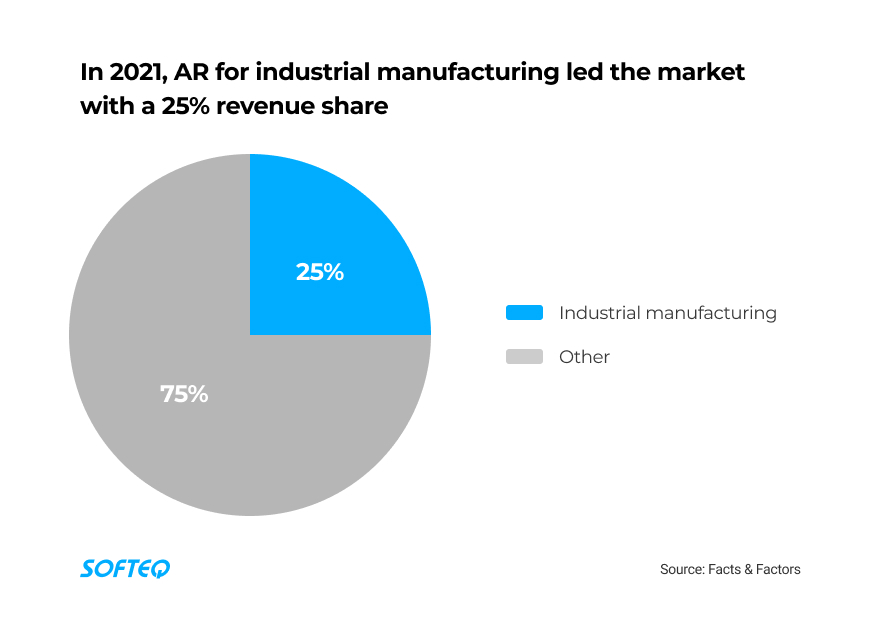
Now, let’s zoom in on practical AR examples. Check out how they benefit manufacturing companies, no matter what you produce—vehicles, electronics, chemicals, or plastics.
Use Сase 1. Working Instructions and Training Guides
In manufacturing, creating instructions is no simple task. An engineer can spend hours writing out each step of the assembly process for a single part. It then takes time for operators to understand a long, verbose document in full detail. AR, in contrast, is here to bring on-demand, easy-to-understand alternatives to paper and oral guides.
This new format of instructions can assist employees with daily tasks. For example, technicians can receive information in their AR glasses without being distracted. Audio cues, animations, and videos help capture their attention. Luckily, all these features can be programmed with a drag-and-drop interface.
Similarly, AR guides can train individuals or large groups and adapt to any skill level. The information can be presented via displays, glasses, or headsets and updated across the enterprise in one click. Digital solutions can also ensure the information is the same at every workstation. What’s more, no trainer is needed.
Real-Life Example
L3Harris Technologies is a US-based aerospace and defense company. They implemented AR guides to speed up manufacturing. Each guide projected onto the workstation has process instructions with visual cues highlighting which pieces go where. The system detects an operator’s hand within an inch. It also helps cut mistakes: the solution alerts the operator when they miss a step or use the wrong component. With AR, the number of assembly-related faults at the company’s site in Rochester, New York, was cut from nine to zero. What’s more, AR instructions allowed operators to focus on the task at hand and reduce workload as a result.
Benefits at a Glance
- Making long and complex manuals consistent, available on-demand, and easy-to-understand
- Attracting more attention to guides and instructions
- Saving budget on training sessions
- Minimizing the number of mistakes on the factory floor
- Speeding up the delivery of instructions among personnel across different locations
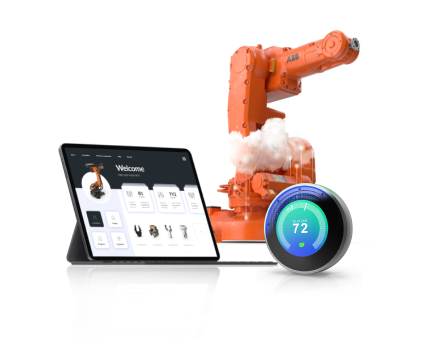
Use Case 2. Product Design and Assembly
Traditional design is usually a long and tedious process. Plus, you might spend a fortune before you can even ensure you have built the right product. With AR, designers can replace physical objects with virtual models and save time and money on testing their ideas as a result. Spatial AR apps also make assembly operations on the factory floor more efficient.
So how does this happen in practice? In vehicle manufacturing, designers combine AR with large-scale models of vehicles to create replicas of finished cars. For engineers, an AR app is a great tool for locating parts. Such apps guide them through the correct order of assembling parts and tightening bolts. What’s more, AR enhances teamwork. All parties can see the manufacturing process in real time and suggest improvements.
AR coupled with digital twins also helps predict how the product will perform in production and in the field. Consider using digital twins in manufacturing. They can help employees see internal components and learn how to repair and service parts.
Real-Life Example
Lockheed Martin, the NASA contractor, used AR to assemble Orion spacecraft components. Orion was built to send people to the Moon and back. Spacecraft engineers wore AR goggles to match elements without mistakes. AR also identified employees who were responsible for assembling a specific node. Thanks to AR, the manufacturing process was quicker—an activity that normally took eight hours was completed in 45 minutes.
Benefits at a Glance
- Speeding up prototyping and design with virtual mockups
- Saving budget on building expensive physical prototypes
- Making parts assembly faster and mistake-free
- Improving the efficiency of workers with virtual assistance
Use Case 3. Quality Control and Inspection
No matter what you produce—vehicles, electronics, or petroleum—quality is always a top priority. And AR helps you perform quality inspections at any step of product development. As a result, you can analyze parts and assembled components in real time.
In particular, AR in tandem with cameras and machine learning algorithms can detect errors and help correct them. Systems like these can identify potential issues and probable sites of failure. Workers, in turn, won’t move on to the next step until they have fixed bugs. In general, AR shifts companies to automating their QA processes. And car giants like Porsche use AR for quality assurance in their manufacturing plants.
Real-Life Example
BMW uses AR to inspect the tools delivered at its toolmaking and plant engineering units in Munich, Germany. With an AR app, a technician receives data related to each tool—its drill holes and clear surface features—before using it. Algorithms overlay each image taken with around 50 criteria. If a tool doesn’t meet the specifications, they have a chance to rework it before sending it to the assembly area.
Benefits at a Glance
- Assessing the quality of machinery and equipment in real time
- Detecting bugs before they cause failures
- Saving budget on costly repairs
Use Case 4. Improved Safety
Safety is always an issue in the manufacturing environment, and AR can tell you if working conditions aren’t safe. For example, a worker with a head-mounted display (HMD) can see which pieces of equipment are hot and unsafe to touch with bare hands. HMDs can effectively guide the staff on the factory floor.
AR also contributes to creating a safe workplace for new employees. It makes it possible to train staff without the need to use complex machinery or dangerous equipment. What’s more, AR helped protect workers during the pandemic. It meant remote specialists could connect and take part in product development.
Real-Life Example
Grupo Boticário is one of the largest cosmetic companies in South America. In 2020, they started using AR at their manufacturing facility in Brazil. Travel had stopped at this time because of the pandemic, and Grupo Boticário had to arrange communication between remote specialists. AR glasses came in handy: on-site operators could receive expert audio and video support. As a result, AR helped Grupo Boticário keep employees safe in isolation and continue developing their products.
Benefits at a Glance
- Assessing conditions on the factory floor
- Preventing injuries on the factory floor
- Saving budget on technical training
- Creating safe working conditions
What Prospects AR Brings to the Manufacturing Industry
Companies like Airbus, Boeing, and Honeywell have AR use cases and have already benefited from them. For example, Google Glass helped Boeing speed up the construction of plane wire harnesses. The wire assembly is now 25% quicker, and operators make half as many mistakes.
Experts predict that AR will become the key disruptive technology in the near future, even leaving AI behind. Manufacturers will be adopting AR despite the high cost of headsets and smart glasses. AR goggles could even replace smartphones. In the meantime, today, the smartphone market is a great supporter of AR applications.
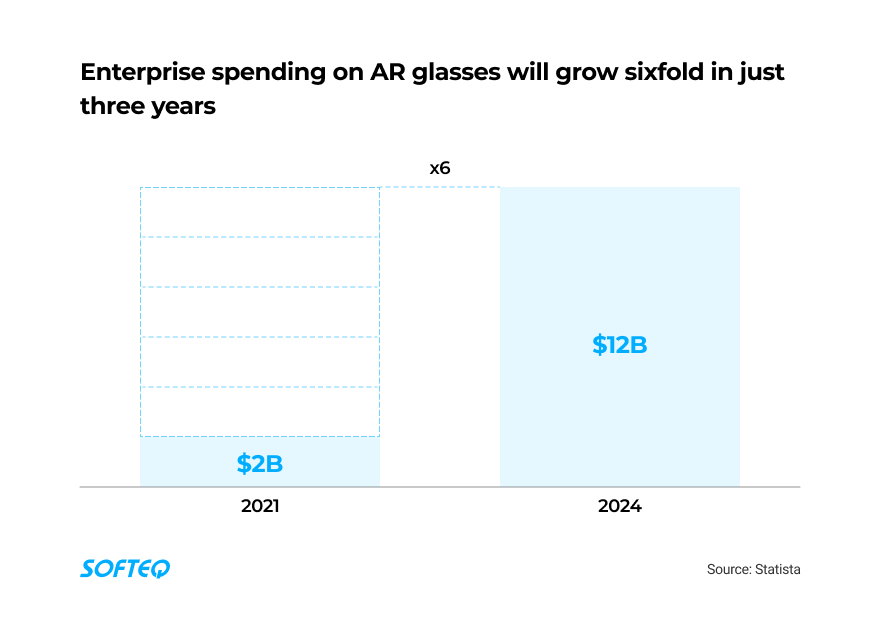
Rising investor interest is also helping AR use cases spread and evolve. The big investment areas in AR today are 3D cameras, displays, motion tracking, eye tracking, facial recognition, localization, and mapping.
The market volume estimates show AR will spread and generate revenue at an incomparable speed.
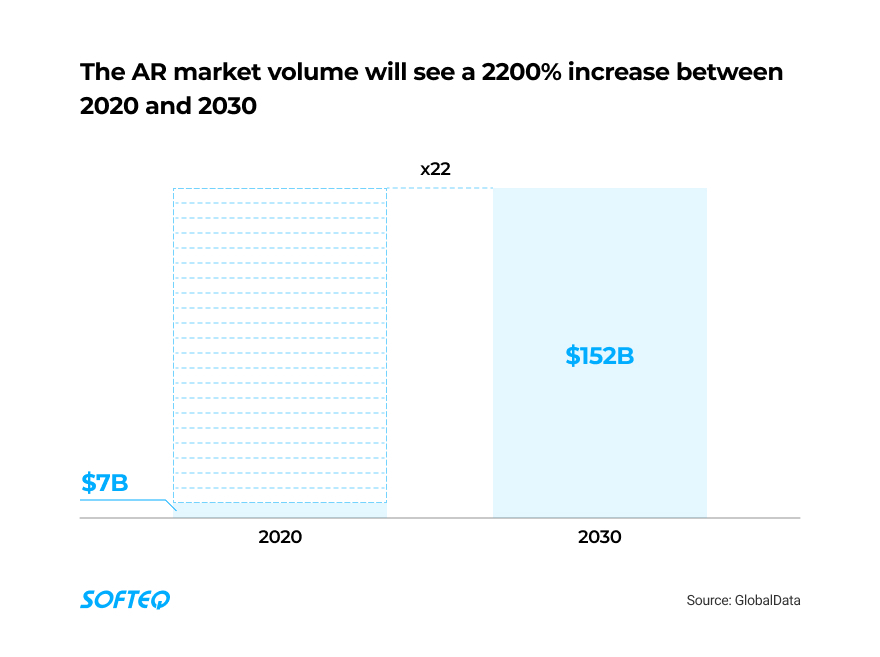
Afterword
AR in manufacturing is in its infancy, but it has big ambitions. With AR, it’s possible to produce faster with fewer mistakes and without extra spending on education. These key benefits will drive the spread of augmented reality, regardless of the relatively high price of AR development. Because inefficient manufacturing—like making mistakes on the production line that require expensive repairs later—costs more. And if you need a proven partner to help you take AR on board, Softeq could be your company of choice.
More articles on the topic
